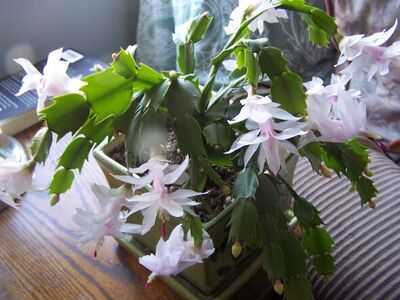A Christmas cactus can be recognised by its trailing branches composed of flat green leaves and rounded teeth. They produce pink, white, red or purple flowers that put on a festive flowering display in winter. While they are easy to grow, if you already have one in your home, you can encourage flowering by making sure it is in a certain location, according to the Royal Horticultural Society (RHS).
The experts said: "Christmas cacti are easy to look after as houseplants, but to ensure flowering, give them two rest periods per year. A month or two of cooler temperatures and less watering. These should be in the run-up to bud formation in autumn and again after flowering in late winter."
During the growing season in spring and summer, this houseplant prefers a warm environment, around 18 to 20°C.
This is the same when they are in flower, from late November until early January, so make sure they are placed somewhere warm, but not directly near heat sources.
To "encourage flowering", they also need two periods of cooler temperatures, at around 12 to 15°C, according to the experts.
One of these should be in winter, until the buds start to appear, and the other after flowering, from late January to late March.
The experts added: "This temperature reduction can be achieved by moving the plant to a cooler room, or, if grown on a windowsill away from heat sources, the temperature may dip naturally. Exact temperatures aren't critical to promote flowering, but there should be a distinct drop."
These plants also need two rest periods of reduced watering per year, to encourage flowering.
Make sure to water regularly from April to September, keeping the compost moist but never waterlogged. From mid-September until the buds start to develop, reduce watering.
Once you see the flower buds, resume watering until the flowers fade, taking care not to overwater.
The other resting period should be after flowering, from late January to late March. Then, return to watering regularly through spring and summer, until mid-September when the next rest period starts.
The experts noted: "During these two rest periods, let the top few centimetres of compost dry out between waterings, but never let it dry out entirely.
You may also like

Chai, momos & early interviews: How Zohran Mamdani spent his 1st day as NYC Mayor-elect; shares 'highlight' moment

Family blast new mum for picking baby name that looks like 'tragic typo'

Christmas cacti must be placed in 1 location to 'encourage flowering' this winter

HMRC confirms date for when tax refund payments will arrive in bank accounts

Hollywood starlet reveals 1 place that makes her want to throw up







